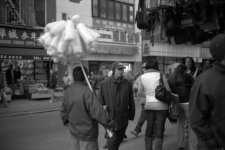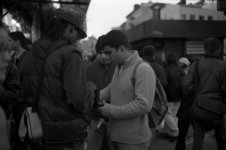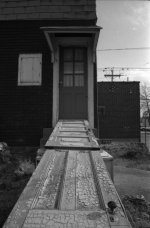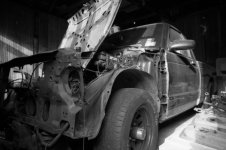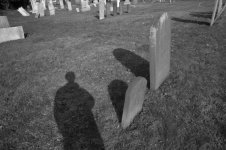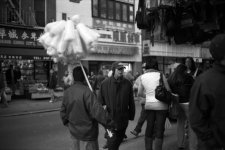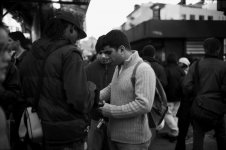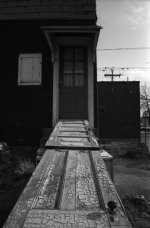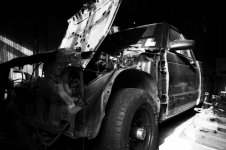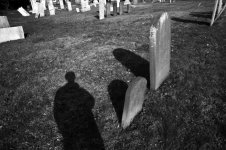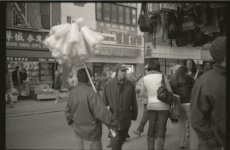bml
Established
So I just got back my first set of black and white negatives today. I didn't get prints made up because I planned on simply scanning the negs in at home, which I did.
After looking through all the scans, I feel as though something is off with these photos. I feel like they are perhaps soft and lacking contrast, but I would like a second opinion. For a better idea of the shooting conditions, here's a summary:
All photos were shot on Agfa APX 100, at ISO 100 on a Bessa R3A.
candyman.jpg, shady.jpg: Shot with 40/1.4, in NY with fairly good light conditions. The light was perhaps a little dull, because the sun was starting to make its way down. I think both were shot at decently quicky shutter speeds, definitely above 1/60.
doors.jpg: Shot with 25/4, sunny conditions. f4? I can't remember... again, shutter definitely above 1/60.
wrecked.jpg: Shot with 25/4, indoors with some light creeping in. f4 at 1/30.
metoo.jpg: Shot with 25/4, sunny conditions. Can't remember shutter speed, but above 1/60. Aperture was smaller than f4, I seem to remember.
I'm not sure if it's my choice of film, my overall rangefinding newbiehood, the scanner, or what, but I do feel like something is off. I scanned using an Epson 4490, at 2400dpi, cropped and levels adjusted in Photoshop. (Adjustments were essentially bringing up the blacks, whitening whites... so that there were no flat spaces on the histogram.)
Any ideas? Thoughts?
After looking through all the scans, I feel as though something is off with these photos. I feel like they are perhaps soft and lacking contrast, but I would like a second opinion. For a better idea of the shooting conditions, here's a summary:
All photos were shot on Agfa APX 100, at ISO 100 on a Bessa R3A.
candyman.jpg, shady.jpg: Shot with 40/1.4, in NY with fairly good light conditions. The light was perhaps a little dull, because the sun was starting to make its way down. I think both were shot at decently quicky shutter speeds, definitely above 1/60.
doors.jpg: Shot with 25/4, sunny conditions. f4? I can't remember... again, shutter definitely above 1/60.
wrecked.jpg: Shot with 25/4, indoors with some light creeping in. f4 at 1/30.
metoo.jpg: Shot with 25/4, sunny conditions. Can't remember shutter speed, but above 1/60. Aperture was smaller than f4, I seem to remember.
I'm not sure if it's my choice of film, my overall rangefinding newbiehood, the scanner, or what, but I do feel like something is off. I scanned using an Epson 4490, at 2400dpi, cropped and levels adjusted in Photoshop. (Adjustments were essentially bringing up the blacks, whitening whites... so that there were no flat spaces on the histogram.)
Any ideas? Thoughts?


